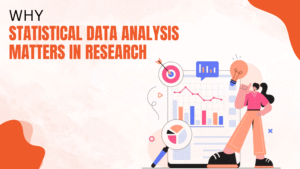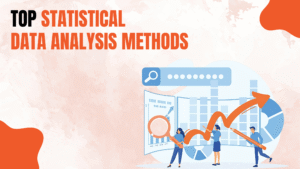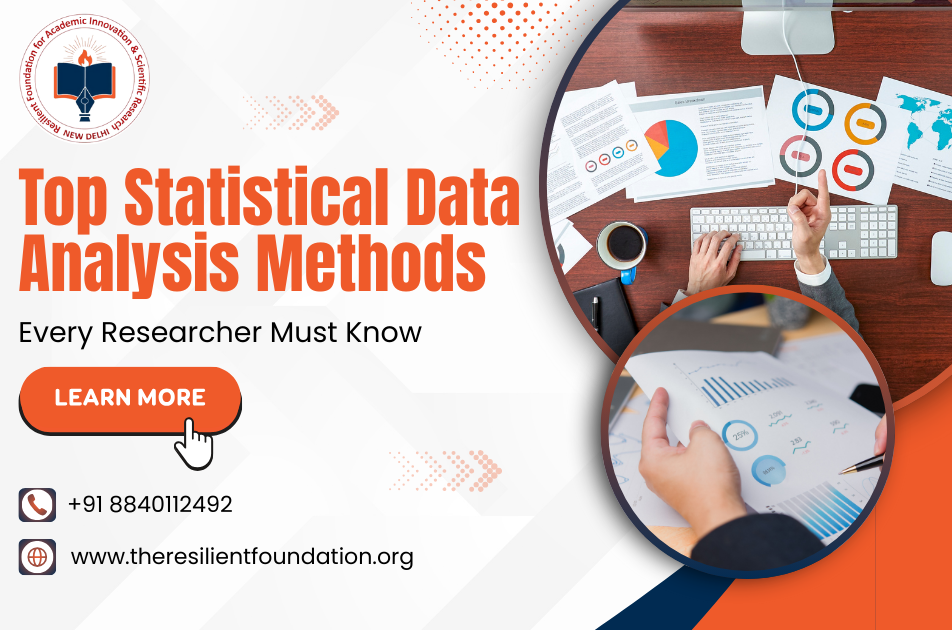Research without numbers can feel incomplete, but when we use statistical data analysis methods, findings become more reliable and easier to trust. Numbers give structure to ideas, and analysis turns those numbers into meaningful results. With proper data visualisation training, quantitative data analysis training, and quantitative statistical analysis, researchers can explain their studies with confidence. Also, clear results make their work valuable in both academic and professional spaces.
Why Statistical Data Analysis Matters in Research
Researchers must understand why these methods are important because they help in turning raw data into knowledge. Below are reasons why analysis matters:

- Accuracy of Results: Using statistical data analysis methods ensures that the findings are not just assumptions but tested facts.
- Better Insights: Through data visualisation training, researchers can uncover patterns that are hidden in large datasets.
- Credibility in Studies: With quantitative data analysis training, a researcher’s work gains respect and recognition.
- Improved Decision Making: When quantitative statistical analysis is applied, researchers make informed choices based on evidence, rather than relying on guesswork.
- Skill Development: Joining quantitative data analysis training programs helps researchers build professional skills that are useful in many fields.
Because of that, every serious researcher needs these tools to succeed in their work.
Top Statistical Data Analysis Methods
There are many approaches, but some stand out because they are simple, powerful, and widely used. Let’s look at the main ones:

- Descriptive Analysis: This is the first step in most statistical data analysis methods. It summarises data using numbers like mean, median, and mode.
- Regression Analysis: With data visualisation training, regression becomes easier to understand because it shows the relationship between variables.
- ANOVA (Analysis of Variance): Researchers who complete quantitative data analysis training learn how to use ANOVA to compare groups.
- Correlation Studies: Quantitative statistical analysis helps in finding how strongly two variables are connected.
- Hypothesis Testing: Every research project needs this method, and many quantitative data analysis training sessions focus on teaching it step by step.
So, these are methods that every researcher must know and apply when handling data.
Choosing the Right Statistical Method
Picking the right method is not always simple, but if researchers follow some steps, the process becomes clear:
- Define Your Question: If your question is basic, use simple statistical data analysis methods like descriptive analysis.
- Understand the Data Type: Charts created during data visualisation training show whether the data is categorical or numerical.
- Match Goals with Methods: For comparisons, quantitative data analysis training highlights ANOVA, but for predictions, regression works better.
- Check Sample Size: Quantitative statistical analysis depends heavily on how much data is collected.
- Learn from Experts: Attending quantitative data analysis training gives guidance on choosing correctly.
Therefore, the right method depends on both the question and the data structure.
Expert Tips for Better Data Analysis
Even with the right methods, good results require careful practice. Experts suggest the following tips:
- Always Clean Your Data: Before using statistical data analysis methods, remove errors and check for missing values.
- Use Visuals for Clarity: Charts and graphs from data visualisation training make complex results simple to read.
- Practice with Real Data: Quantitative data analysis training teaches best when applied to real datasets, not just theory.
- Avoid Overcomplicating: In quantitative statistical analysis, keeping models simple avoids confusion.
- Keep Updating Skills: Joining new quantitative data analysis training workshops ensures researchers stay up to date.
Also, researchers must keep notes of every step for easy reference later.
Practical Application in Real Research
The value of analysis comes when applied in real projects. Many organisations, including Resilient Foundation, support researchers in learning and using these methods effectively. Here’s how it works in practice:
- Healthcare Research: With statistical data analysis methods, medical studies find patterns in patient recovery.
- Social Development Studies: Charts from data visualisation training help communities understand progress in education or health.
- Business Research: Professionals use quantitative data analysis training to predict customer behaviour.
- Policy Development: Governments rely on quantitative statistical analysis to design programs that actually solve problems.
- Skill Growth: By joining quantitative data analysis training supported by the Resilient Foundation, young researchers gain real-life skills for impactful careers.
So, when researchers apply these methods, their results go beyond books and make a real change in society.

